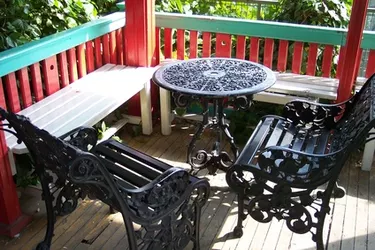
Cast aluminum can be found in many products used everyday in and around the home. Barbecue grills, patio furniture, kitchenware and car parts can all be made from cast aluminum. When these items are no longer functional, the aluminum is recovered and recycled into other useful items. Cast aluminum is classified in two groupings: "breakage" and "clean." Cast aluminum sold to the recycling center as breakage consists of other metals and brings a lesser price per pound than clean cast aluminum that has all of the other metals removed.
Step 1
Place a magnet on the metal that you want to recycle. Magnets will not stick to aluminum, copper or brass. These three metals can be separated by color, with cast aluminum having a silver-colored finish.
Video of the Day
Step 2
Remove nuts, bolts, brackets and other bits of metal from the cast aluminum piece. A socket wrench and pry bar will be helpful in removing most non-aluminum scrap from the cast aluminum. Hardware may be attached with rivets. Drill through the rivets with a drill bit of the same diameter to remove the hardware from the cast aluminum.
Step 3
Clean the grease and debris from cast aluminum. Household degreasing cleaner and a power washer will remove residue. Cast aluminum free of residue and breakage metals brings a "clean" cast aluminum price at recycling centers.
Step 4
Separate cast aluminum from other types of aluminum, including beverage can aluminum. Cast aluminum is a less pure form of aluminum compared to other types of recycled aluminum. Aluminum is bought by the pound, and separating the types of aluminum will ensure you are paid the right price at the recycling center.
Step 5
Investigate the recycling centers in your area. Like other metals, recycled cast aluminum will vary in price per pound.
Tip
Cast aluminum classified as “breakage” contains 5 percent or more foreign metal.
Cast aluminum is commonly found in engine and transmission parts.
Things You'll Need
Magnet
Socket wrench
Drill and drill bit
Degreaser
Power wash
Video of the Day